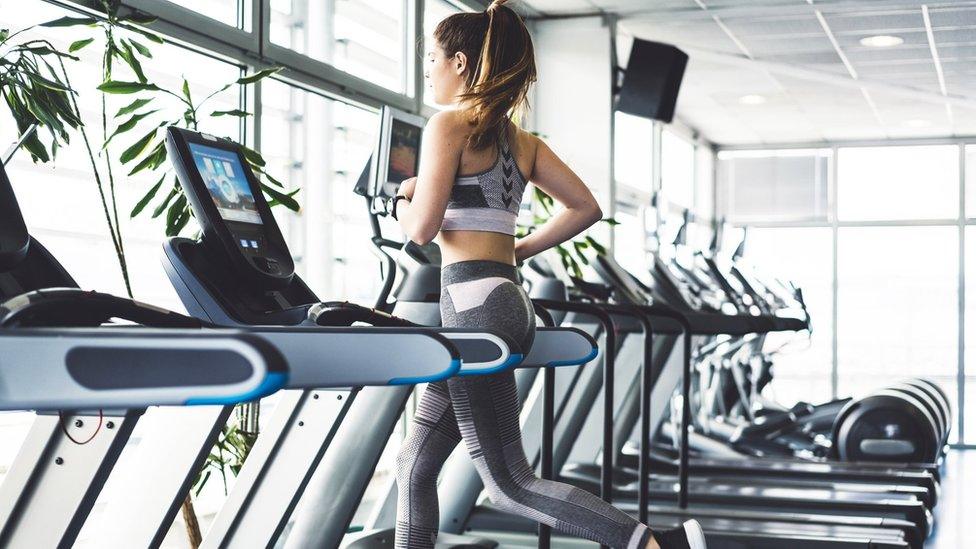Coronavirus in Scotland: What's still closed, and why?
- Published
- comments
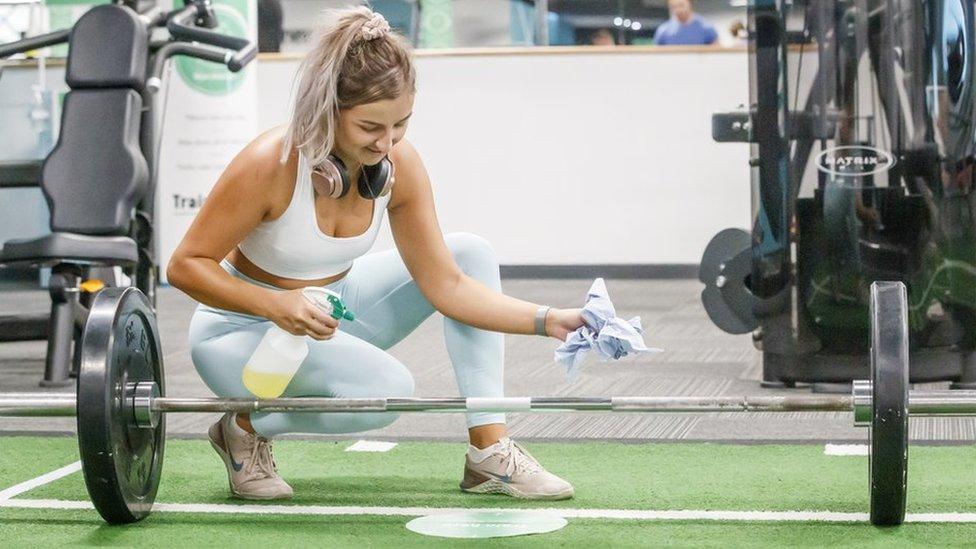
As lockdown restrictions have eased, more places have reopened - but some remain closed.
The Scottish government issued guidance on reopening sport and leisure facilities, external and has now announced that some will be able to reopen earlier than planned, external.
It says the reason these places - listed below - are still closed is because they "involve prolonged close social contact" or "a complex range of risks which increase the chance of infection spreading".
BBC Scotland asked three experts for their take on why these places might still be closed.
Gyms and fitness studios
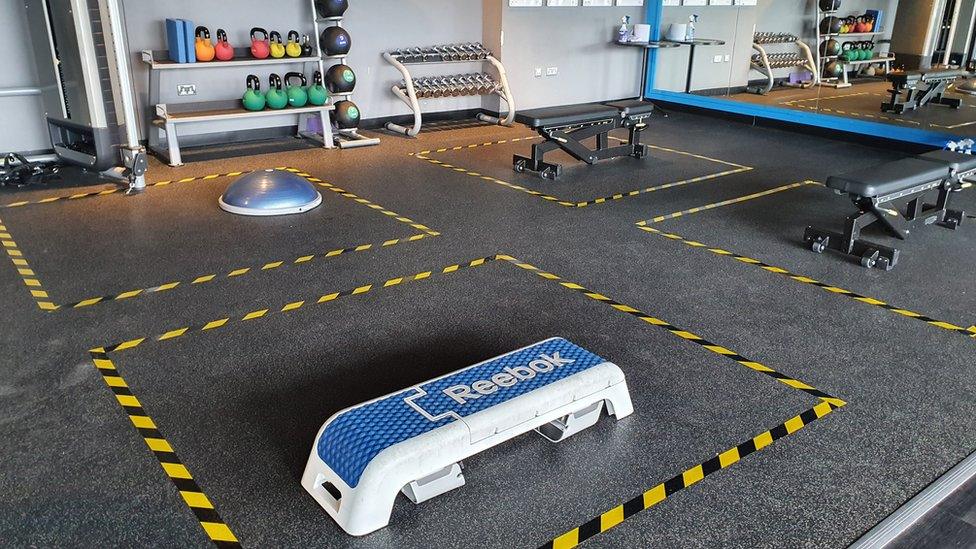
"Gyms in some ways are more dangerous than pubs," says Prof Hugh Pennington of Aberdeen University.
That's because when you exercise, you breathe more heavily. And that means, if you have coronavirus, you are expelling more particles when you exhale.
If you don't have the virus but someone else in the gym does you inhale more virus particles.
In an environment where high-intensity exercise takes place, good ventilation is very important.
Prof Fiona Henriquez, of the University of the West of Scotland (UWS), points out that gyms are full of high-touch areas - such as weights and machines - which could provide a platform for the virus to be transmitted.
"We're still not there in terms of understanding how long the virus can live on certain surfaces," she adds.
Communal changing areas also present a risk, according to UWS's Dr Gordon Mackay, but the risk is lower in cubicles.
Scottish government guidance, external says changing rooms and showers should be avoided.
Gyms were originally set to reopen on 14 September, but that has now been brought forward to 31 August.
Swimming pools
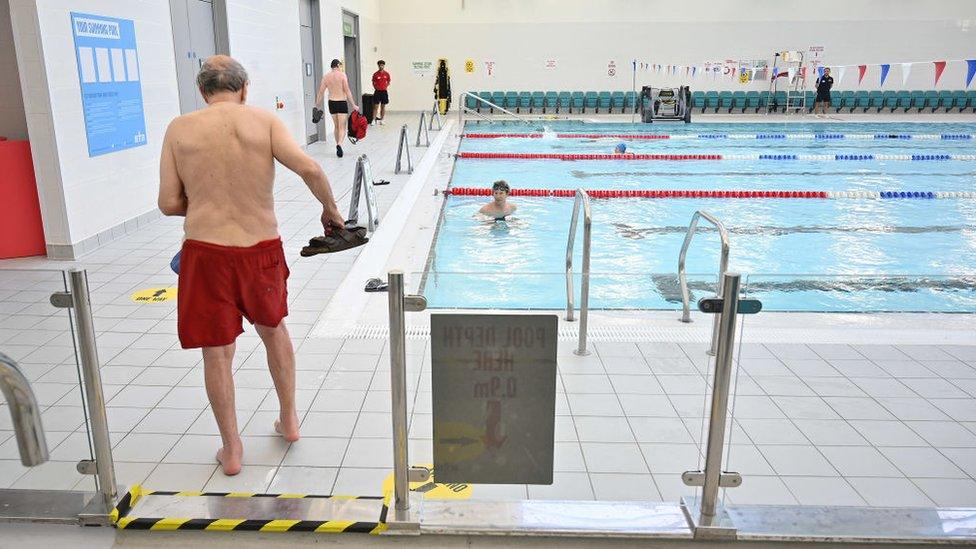
Prof Pennington says he is "slightly puzzled" about why swimming pools have remained closed so long. They present a lower risk than gyms.
Pools tend to be in large rooms with high ceilings, and the nature of swimming leads to natural social distancing. He said numbers should still be restricted though.
While there can be heavy breathing, it's dependent on the stroke.
If someone expels the virus through their breath, it can hang about in the air or land on surfaces at the poolside.
Although chlorine will kill coronavirus, it survives in droplets of water in the air and on hard surfaces so it's reasonable to suggest that humid environments may allow the virus to survive for longer.
Maintaining social distancing in changing rooms, at the pool side and in the pool will be important, Dr Mackay adds, and the cleaning of high-touch areas is crucial.
Swimming pools will now reopen on 31 August.
Indoor leisure centres

When it comes to indoor sports courts, many activities such as badminton and squash take place in open spaces with small numbers of people.
However, the lack of ventilation may be an issue on some courts.
The reopening date has been brought forward to 31 August.
Nightclubs
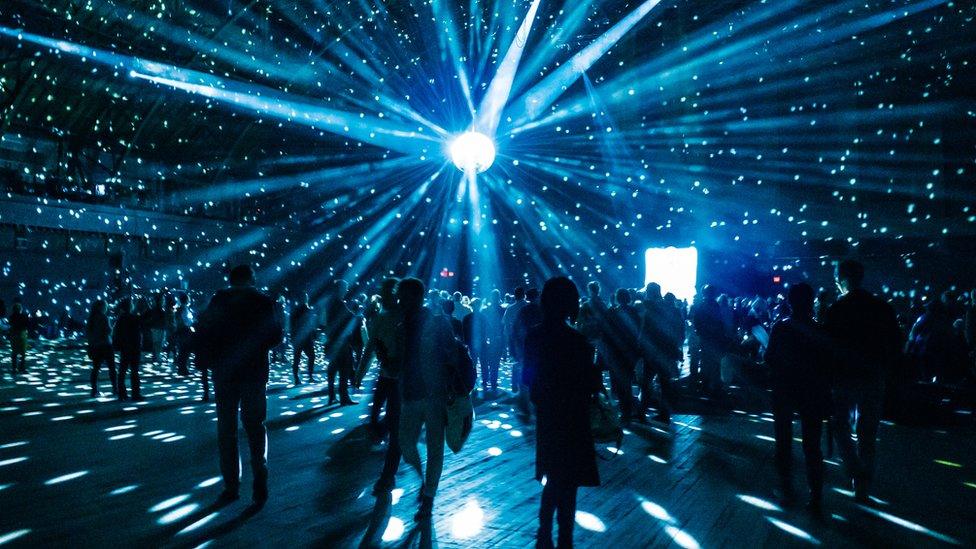
Nightclubs are "all the risk of pubs but even worse", says Prof Pennington.
"It's the amount of people in the club, in close proximity and in an enclosed space," says Prof Henriquez.
Add to that loud music which encourages clubbers to shout to each other and sing, and you have a very high-risk environment.
No date has been given for the reopening of nightclubs.
Skating rinks
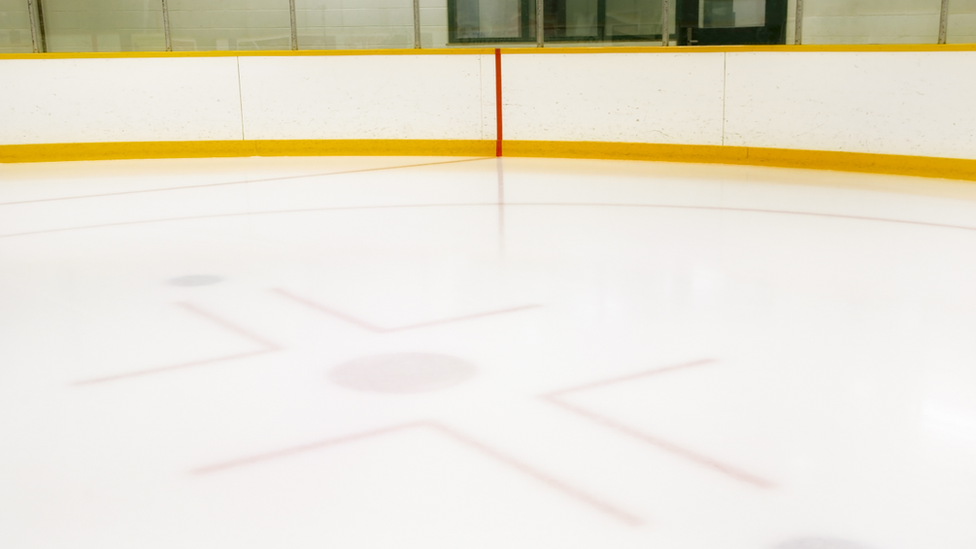
Experts think cold air keeps droplets of viruses in the air a bit longer. In the case of coronavirus, it's not yet known exactly how long.
Also, what you do on the ice rink too changes the level of risk.
If you're just skating, and there's social distancing, then the risk is lower compared to playing ice hockey, for example.
Prof Pennington categorises the risk as "slightly higher than swimming pools but nowhere near as bad as gyms or pubs".
But the risk also depends on the size of rink and how many people are on it.
The reopening date for ice rinks has been brought forward to 31 August.
Bowling alleys and arcades
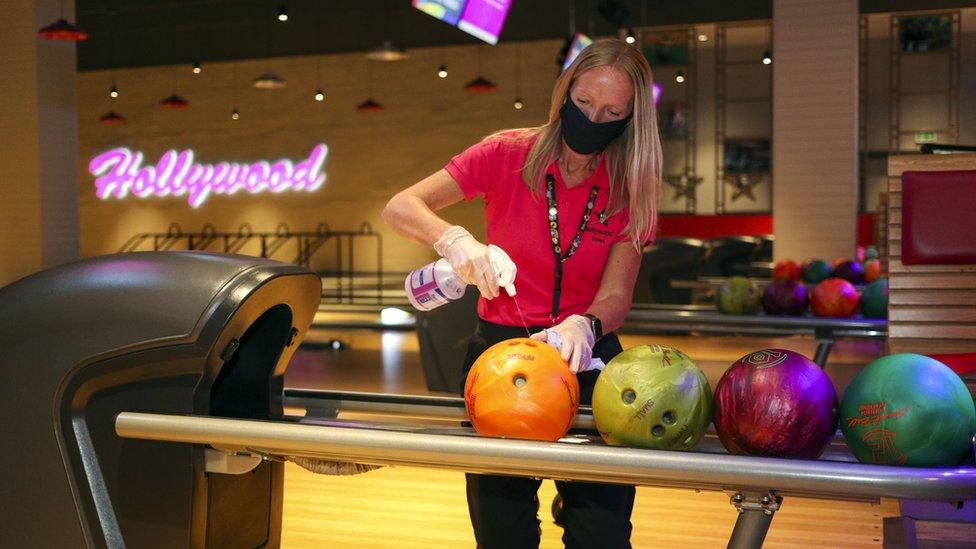
As with all indoor venues where people are congregating, size and ventilation are again key to safety. Lower numbers are safer, and it's important to social distance.
The bigger risk than inside the bowling area or arcade, says Prof Pennington, is in nearby areas where people congregate to eat and drink.
Prof Henriquez points out that there are many high-touch areas - such as bowling balls and shoes, and buttons and levers on arcade games.
Dr Mackay adds that because people are constantly on the move in arcades and bowling alleys, it can be difficult for operators to manage social distancing.
Scotland's bowling alleys and arcades can reopen from 24 August.
Theatres and concert halls
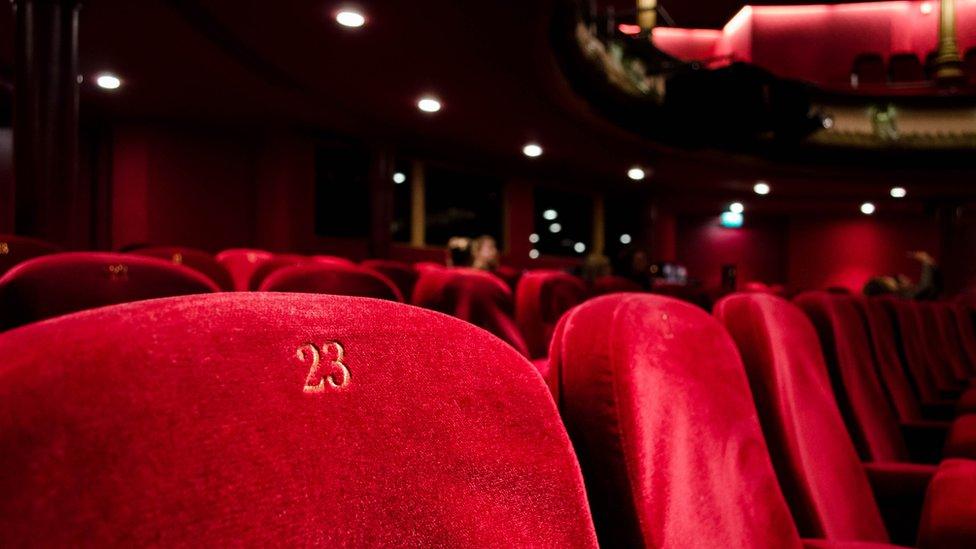
The number of people in one room is the main problem for concerts and theatres, as well as their proximity.
If someone in the hall had coronavirus, the number of cases could be very large - and could lead to the virus spreading into the community.
And getting people in and out for set times while still social distancing would be very tricky, according to Dr Mackay.
Prof Henriquez says we also have to think about how to keep performers safe.
They may be shouting, enunciating or singing to each other and that creates another risk to consider.
And we also have to think about the risk of transmission via surfaces - seats, for example.
Theatres and indoor live music venues are scheduled to reopen on 14 September.
Soft-play centres
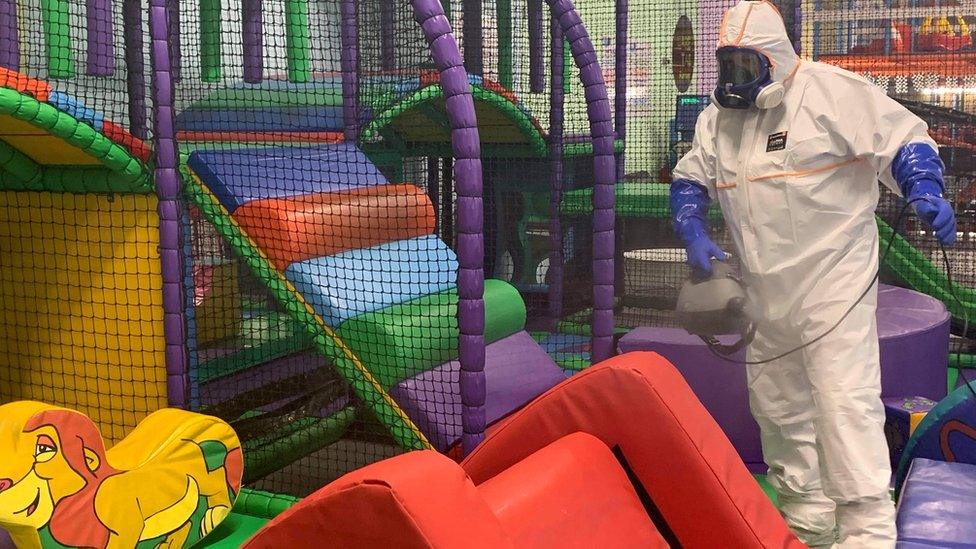
Enhanced cleaning at a soft play area in England before reopening
Soft-play areas are very high touch - how long will the virus survive in a plastic ball pit, for example? We don't know yet, points out Prof Henriquez.
And then we also have to consider how coronavirus affects children. Some studies suggest younger children don't transmit the virus, but there's still a lot of debate out there.
It will also be very difficult to manage social distancing among children while they're playing, adds Dr Mackay.
Indoor soft play centres are scheduled to reopen on 14 September.
Bingo halls and casinos
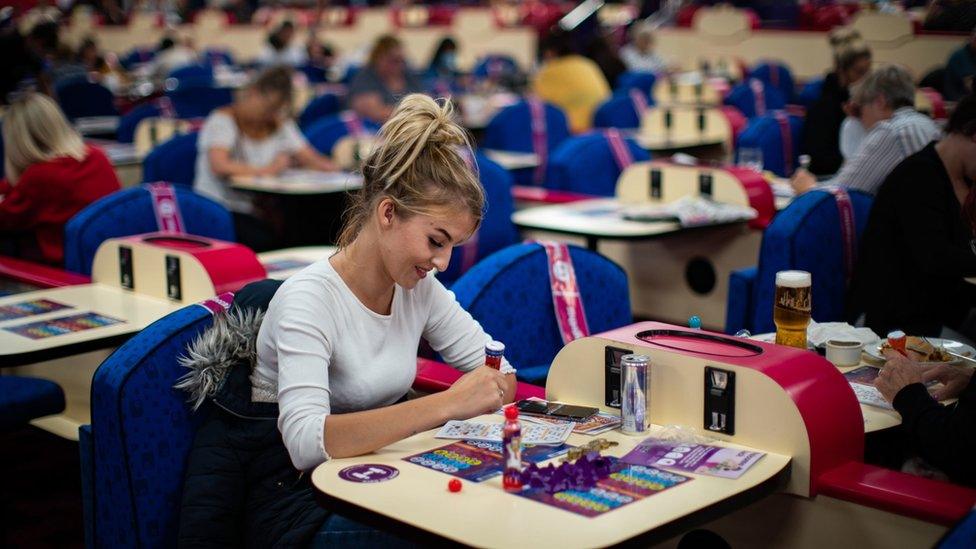
Bingo halls should reopen on 24 August
Bingo halls and casinos are social areas where large numbers of people gather in an enclosed space.
The risks can be mitigated - the size of the venue and the number of people inside are important considerations. Social distancing is key.
With bingo, there's a bit of audience participation - which brings a small risk - but "if someone is wearing a face covering the virus is unlikely to spread," says Prof Henriquez.
There's also the risk that the bingo caller shouting out the numbers could transmit the virus, but this could be mitigated by having them tested in advance, Prof Pennington suggests.
As well as ventilation and social distancing, Prof Henriquez notes that to safely reopen casinos we have to understand a bit more about viral transmission on surfaces and how to effectively disinfect things.
How do you sanitise a pack of cards? What about the dice or the chips?
Scotland's casinos and bingo halls will be allowed to reopen from 24 August.
Funfairs
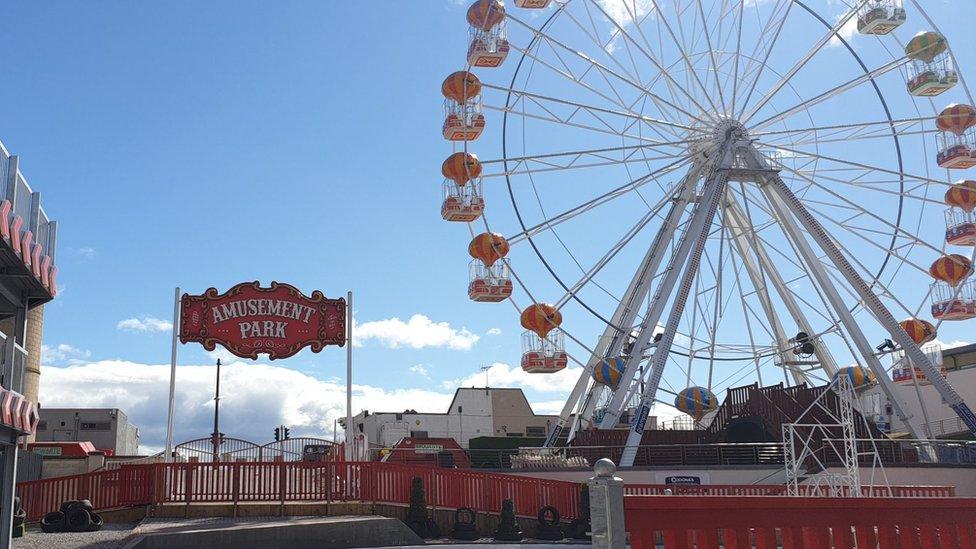
The main risk Prof Pennington sees at a fun fair is in groups of people congregating.
Social distancing - even outside - is key. However, he points out that the risk of the virus spreading outside is 20 times lower than inside.
Disinfecting all surfaces after each and every ride is very difficult, Dr Mackay adds. It's also tricky for operators to manage social distancing when the nature of funfairs means groups of people are moving about the fairground.
Funfairs will be allowed to reopen from 24 August.
- Published1 July 2022
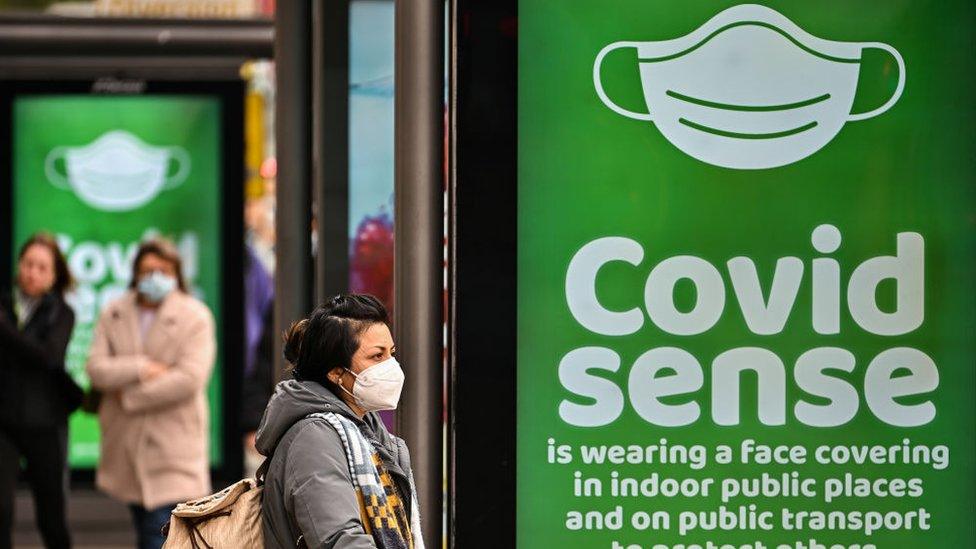
- Published25 July 2020
